ESI Emphasises On Results, More Than Products: Emmanuel Leroy
- By MT Bureau
- June 22, 2021

OEMs are facing new challenges to improve the existing technologies and develop next-generation ones for the new mobility in shorter times. Reducing market responding time along with new complexities are paving the way for virtual simulation, which displaces physical tests and prototypes by virtually replicating product development, testing and manufacturing with simulations. Emmanuel Leroy, Executive Vice-President Industry Solutions at ESI Group, explains, “We enable our customers to drastically reduce every additional physical prototype by using our solutions. In the end, only one physical prototype is required to validate the whole concept. We envision that one day we may be able to virtually certify a product from end to end.” Excerpts:
 Q) How did the Covid impact the software and services businesses of ESI Group?
Q) How did the Covid impact the software and services businesses of ESI Group?
The Covid pandemic has accelerated the need for more digitalisation within the industrial market. It has also somehow accelerated the readiness level of our customers and made solutions such as virtual prototyping even more relevant. Indeed, we enabled the continuity of our clients’ business. The use of virtual prototyping allowed them to continue designing, testing and prototyping their products. Our human-centric approach – one of ESI Group’s four outcome solutions – was particularly used by our customers to ensure the continuity of their businesses: using virtual reality to experience the product from home.
During pandemic times, we also provided our CFD (computational fluid dynamic) solutions to help investigating different scenarios to demonstrate the effect of occupant proximity, ventilation systems and contamination avoidance unique to each office and plant environment. ESI Group developed different virtual scenario, based on its facilities in India, to optimise the return to offices and on plant – especially on a car assembly line.
How the growing complexity of part process is influencing the virtual testing?
We notice that the automotive industry is facing more and more draconian regulations, disruptive technologies, intensifying competitions and shortening response time. Coupled with these, customers are getting more demanding on quality, reliability, safety and production deadlines in the business. Indeed, end users are no longer looking for products but for results (flight hours instead of engines, number of possible kilometres instead of electric car, etc.) and they seek for committed and responsible automakers to motivate their buys. At ESI Group, we have understood these preoccupations and we have defined four primary solutions answering our customers’ expectations.
 The first one is the Pre-certification and Validation, enabling gains in performance and productivity. The purpose is double: meeting certification and validation requirements like crash, safety and fatigue issues in the first attempt and then increasing productivity with predictive models and process automation.
The first one is the Pre-certification and Validation, enabling gains in performance and productivity. The purpose is double: meeting certification and validation requirements like crash, safety and fatigue issues in the first attempt and then increasing productivity with predictive models and process automation.
The second outcome is Smart Manufacturing, which enables to establish the right manufacturing processes to meet the performance indicators for industrial products and processes.
The Human-Centric Product and Process Validation, our third outcome, focuses on humans by implementing an operator-centric approach to ensure the efficiency of assembly, maintenance operation and the safety of human interactions.
The last one, Pre-experience, is the most advanced solution of ESI Group. Here, our customers and the operators do not look at the product itself, but virtually experience a product, component, subsystem or system under numerous conditions and environments.
Using these approaches, we identify industry challenges from the customer’s perspective and support them in achieving their results.
Finally, as products are getting more complex, one of our strengths is our end-to-end multi-material assembly solution with modelling of different materials (steel, aluminum, composite) and manufacturing processes, covering all the product development cycle.
What will be the growth drivers for the internal combustion engine-driven vehicles business?
Safety is essential and will remain a key driver in the future. Today, the active safety is gaining traction owing to the regulations and overall trends. There is an increasing demand for smart integrated safety, which caters to both active and passive what?
Alongside there are regulations on Co2. In Europe, the Worldwide Harmonised Light Vehicle Test Procedure (WLTP) Norm is challenging and will eventually be implemented in other countries. Regarding Co2 reduction, we focus part of our research and innovation around engine efficiency, aerodynamics and light-weighting, as we did with Bentley for instance.
OEMs are also looking to reduce the manufacturing cost and development time which are leading demand for virtual prototyping, digital twin and shifting OEMs’ investment from hardware to software. The end-to-end value and the digital continuity from the early design to the production is essential to achieve these goals.
OEMs are exploring possibilities to manufacture ICE vehicles and EVs on the same line. Being a solution provider for the smart manufacturing process, how do you see this as a challenge?
Some OEMs assemble EV and ICE vehicles on the same line and look for flexibility, while others use completely dissociated platforms. We, consequently, must find the right strategy regarding their requirements. The new upcoming challenges in CASE mobility manufacturing will bring even more complexities from components to manufacturing. We have to consider the complexity to train the operators: our virtual reality solutions are key here. We help our customers by providing training, on both ICE vehicles and EVs manufacturing processes to their team, even from different place around the world, gathered on the same interface. This solution gathers all stakeholders (from operators to QHSE officers and plant managers) around the same product. This immersive tool helps getting complementary feedbacks early on in the process.

Where do you find more competencies or comfortability — in the complete vehicle design or component design?
Clearly, we are positioning ourselves on the whole vehicle design as it gives the most significant benefit for the OEM and other customers. We are talking about an end-to-end value that we can demonstrate on full scale CAE demonstrators. When it comes to a standalone component, the complex interactions between components and environment are not well taken into account and can lead to reduced predictiveness. In this case, we come up with a holistic view of the problem itself. It is how we defined the four outcome solutions introduced earlier.
Do you think that virtual prototypes will, at a 100 percent, completely replace physical ones ?
Virtual prototypes are step by step replacing physical prototypes. Nevertheless, I think physical prototypes remain today essential to certify the product at the very end of the development phase. To give an example, in 2019 Renault succeeded a 5-star rating of its Clio 5 on the Euro NCAP safety certification test with a single physical prototype, the one needed for the consumer test. Virtual certification is a topic discussed within the automotive ecosystem, allowing to solely relying on the simulation from end to end. But we are not at that point right now.
Which is your largest market for automotive business?
The automotive industry is the most significant contributor to our total revenues. Today, Japan is the largest market for our automotive business. However, India has been an important market for ESI, and it has been growing quite well over the years.
Most of our engineering developments teams, for both our software and our platforms, are based in India.
What are the challenges in the business?
The increasing complexity I mentioned before is definitely a challenge, but it also brings opportunities to us. Our end-to-end multi-material, multiprocess solutions and chaining capabilities are key to overcome the challenges of the automobile market. Due to the ever growing content of electronics, system simulations and systems of systems techniques are improving as well. Our focus is to strengthen our collaboration with partners in the ecosystem to support the customers in solving their complex problems. (MT)
Tarun Garg Takes Charge As Hyundai Motor India’s First Indian MD & CEO
- By MT Bureau
- January 01, 2026
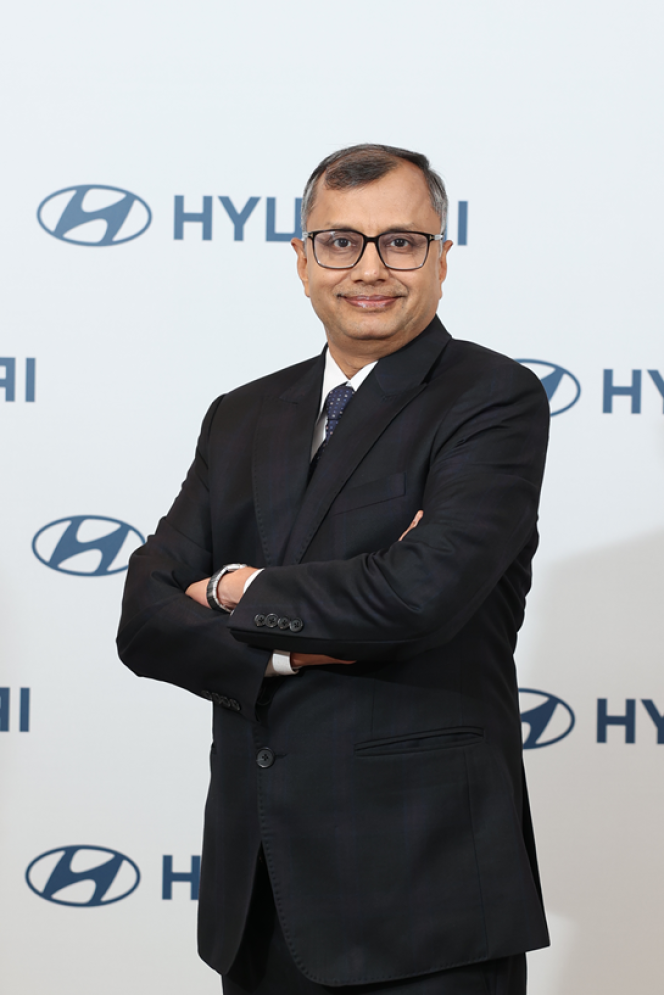
Hyundai Motor India (HMIL), one of the leading passenger vehicle manufacturers, has announced that Tarun Garg has assumed the role of Managing Director and Chief Executive Officer, effective today.
With this, Garg becomes the first Indian national to lead the company since its inception 29 years ago. He comes with over 32 years of experience in the automotive industry and previously served as the Chief Operating Officer of Hyundai Motor India. His appointment comes as the company prepares for its next phase of growth in India.
HMIL has outlined an investment roadmap of INR 450 billion to be implemented by FY 2030. Under Garg’s leadership, the company will focus on four pillars:
- Future-Ready Strategy: Acceleration of electric vehicles, hybrids and connected mobility.
- People and Market Focus: Support for employees and the network of dealers and suppliers.
- Customer-Centric Approach: Building trust and experience across touchpoints.
- Production and Exports: Enhancing indigenisation at plants and positioning HMIL as a hub for exports to emerging markets.
“India’s automotive industry is at an exciting inflection point, driven by innovation, sustainability, and evolving customer aspirations. It is an extraordinary honour to lead Hyundai Motor India at this defining moment in our three-decade long journey. My vision is to build on our strong foundation while accelerating HMIL’s transformation towards sustainable growth, technological leadership, and unmatched customer delight. We will continue to reinforce our commitment to ‘Make in India’ and position HMIL as a global hub for exports. Aligned with Hyundai’s global vision of ‘Progress for Humanity,’ we will strengthen Hyundai’s legacy and create meaningful mobility solutions that not only empower people but also connect communities and enrich lives. The future is ours to build and I am committed to leading HMIL with agility, conviction and purpose,” said Garg.
During his time as Chief Operating Officer, HMIL reported record sales for three years and completed an IPO in 2024. Garg also launched the ‘Samarth by Hyundai’ initiative to improve accessibility for people with disabilities.
Before joining HMIL, Garg held positions at Maruti Suzuki India, including Executive Director of Marketing, Logistics, Parts and Accessories. He is a mechanical engineer from Delhi Technological University and holds an MBA from IIM Lucknow.
Mahindra Bets On Mobility Innovation And Skills As Automotive Outlook Turns Transformative
- By MT Bureau
- December 31, 2025
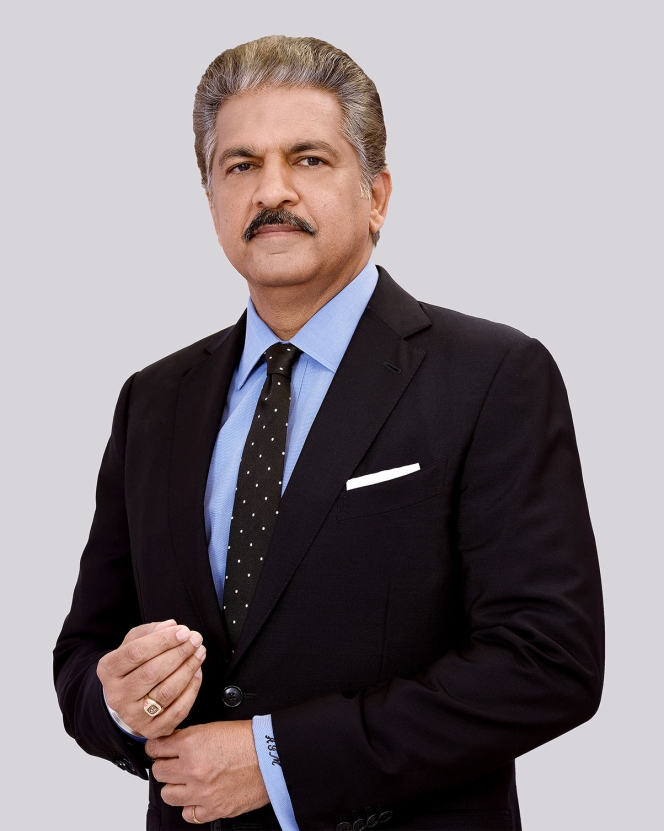
Mahindra Group Chairman Anand Mahindra has struck an upbeat yet reflective note on the automotive industry’s outlook, signalling confidence in demand, technology-led disruption and India’s growing role in shaping the future of mobility. In a year-end address to employees, Mahindra underlined that the Group’s recent performance is less about short-term numbers and more about structural shifts underway in the business and the broader industry.
The Group’s automotive operations stood out in what Mahindra described as a year of ‘market leadership and redefined expectations’.
Mahindra & Mahindra’s SUV portfolio delivered a record market share, consolidating the company’s position in one of India’s most competitive and fast-evolving segments. The performance, he suggested, reflects a sharper understanding of consumer aspirations rather than cyclical tailwinds.
Beyond passenger vehicles, Mahindra’s farm equipment business recorded its highest-ever quarterly market share, while its electric three-wheeler business retained leadership in a crowded and price-sensitive market. Together, these segments underline the Group’s diversified exposure to rural demand, urban mobility and electrification – three pillars that continue to define India’s automotive growth story.
Mahindra framed these achievements as ‘launchpads’, arguing that the Indian automotive industry is entering a phase where execution and innovation matter more than legacy positioning. Once known primarily for rugged, utilitarian products, Mahindra is now increasingly associated with modern design, connected technologies and electric mobility.
“EVs did not just change our portfolio; they changed the conversation,” he said, signalling that electrification has become central to the Group’s identity rather than an adjunct strategy.
This shift mirrors broader trends across the Indian automotive sector, where OEMs are balancing near-term internal combustion engine demand with longer-term bets on electric platforms, software-defined vehicles and advanced manufacturing. Mahindra’s message suggests confidence that Indian players can compete not just on cost, but on technology and relevance.
A significant part of Mahindra’s outlook is shaped by the rapid advance of artificial intelligence and automation. While AI is often seen as a disruptive force for manufacturing jobs, Mahindra offered a contrarian view, particularly relevant for automotive production and supply chains. He argued that AI will act as an ‘accelerator, not a threat’, enhancing the value of hands-on skills on the shop floor.
According to Mahindra, technicians, machinists and operators who can work alongside intelligent systems will become premium assets. In an automotive context, this has implications for everything from smart factories and predictive maintenance to quality control and EV assembly.
“AI can turn blue collar into gold,” he remarked, highlighting a future where digitally enabled manufacturing skills command higher productivity, dignity and income.
The Group is backing this view with investments in skilling and education. Mahindra highlighted its involvement with vocational training initiatives and engineering talent development, positioning skills as a strategic enabler for the next phase of industrial growth. This emphasis also aligns with global shifts in talent mobility, as tighter visa regimes in the West potentially create opportunities for India to retain and attract high-quality engineering and technology talent.
For the automotive industry, this could translate into stronger domestic R&D capabilities, deeper supplier ecosystems and global mandates being executed from India. Mahindra argued that the country has an opportunity to move from being a global ‘back office’ to a global ‘think tank’, especially as Global Capability Centres expand their footprint.
Looking ahead, Mahindra acknowledged that the external environment remains uncertain, shaped by geopolitical volatility, technological disruption and evolving consumer behaviour. However, he positioned uncertainty as a test of resilience rather than a deterrent. With sharper capabilities in mobility, electrification and manufacturing skills, the Group believes it is well placed to chart new growth paths.
For India’s automotive industry, the message is clear: leadership in the next decade will belong to companies that combine product innovation with talent development and technological confidence.
As Mahindra put it, “the future belongs to those who build it” — a sentiment that resonates strongly as the sector navigates its most significant transformation in decades.
Neolite ZKW Lightings Files For INR 6 Billion IPO
- By MT Bureau
- December 30, 2025
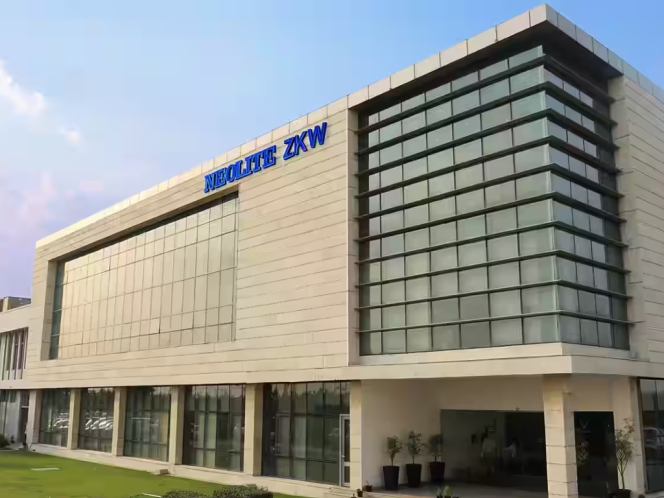
Haryana-headquartered Neolite ZKW Lightings, an automotive lighting manufacturer, has filed a Draft Red Herring Prospectus (DRHP) with the Securities and Exchange Board of India (SEBI) for an initial public offering (IPO).
The IPO comprises a fresh issue of equity shares worth up to INR 4 billion and an offer for sale (OFS) of INR 2 billion by existing shareholders, including Rajesh Jain, Neokraft Global Private and ZKW Group.
The company intends to allocate the net proceeds from the fresh issue to expansion and financial goals. This includes a new greenfield facility at an estimated investment of INR 1.5 billion in Kancheepuram, Tamil Nadu. An estimated INR 790 million towards plant, machinery and electronic expansion at current sites. Furthermore, INR 650 million towards repayment or prepayment of borrowings.
Founded in 1992, Neolite ZKW holds a 34.43 percent market share in India's commercial vehicle lighting segment for FY2025. The company maintains a strategic alliance with the ZKW Group, a subsidiary of LG Electronics.
The company operates three manufacturing units in Bahadurgarh and Pune, serving over 40 OEMs including Tata Motors, Stellantis and Daimler. Its portfolio includes 830 SKUs, with a focus on LED and electric vehicle (EV) lighting solutions.
For FY2025, the company reported INR 5.12 billion in revenue, of which exports contributed 55.08 percent share. The net profit for FY2025 came at INR 528.24 million, as against INR 155.85 million in FY2023. The order book as of 31st October 2025, stands at INR 1.71 billion.
At present, the company exports to over 50 countries, including regions in North America and Western Europe, positioning it as a significant Indian exporter of automotive components.
NHAI And Vertis Infrastructure Deploy Truck Mounted Attenuators For Highway Safety
- By MT Bureau
- December 27, 2025
Officials from the National Highways Authority of India (NHAI) and Vertis Infrastructure Trust have introduced Truck Mounted Attenuators (TMAs) to improve safety in highway work zones. The technology is designed to protect road workers and motorists in high-speed traffic environments.
Work zones currently represent high-risk areas on the Indian road network due to vehicle speeds and limited protective buffering. TMAs serve as a standard safety solution in the US and Europe and are now being scaled across Indian national highway projects.
A truck-mounted attenuator is an impact-absorbing crash cushion fitted to the rear of service vehicles. Its primary functions include:
- Energy Absorption: In a rear-end collision, the unit absorbs the kinetic energy of the impacting vehicle.
- Controlled Deceleration: The system brings the vehicle to a halt in a manner that reduces the risk of fatal injuries to occupants and workers.
- Track Record: Since initial testing on Indian roads in 2021, the technology has been credited with saving more than 100 lives.
The current rollout consists of 20 TMAs. Eight units were inaugurated during the launch event, which included a live demonstration and technical walkthrough. The remaining 12 units are scheduled for delivery within the next ten days.
Ankit Yadav, NHAI, said, “NHAI aims to move towards zero-fatality corridors across national highways. The adoption of technologies such as Truck Mounted Attenuators plays a critical role in improving work-zone safety and reducing avoidable loss of life.”
Dr. Zafar Khan, Joint Chief Executive Officer, Vertis Infrastructure Trust, said, “Our effort has always been to bring practical, globally proven safety solutions to Indian roads. Reaching the TMA stage is about protecting people working in some of the most vulnerable conditions on highways.”
The initiative forms part of a broader strategy to integrate safety technology into India's infrastructure growth, prioritising the reduction of accidents in active construction and maintenance zones.



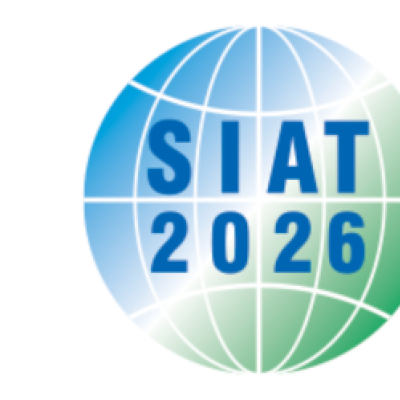
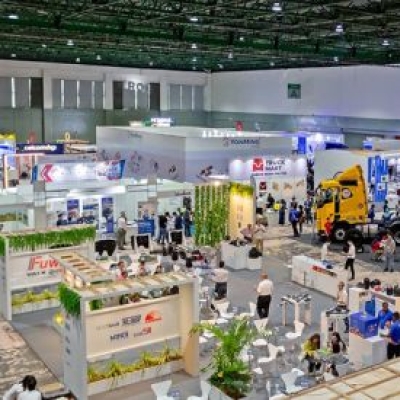


Comments (0)
ADD COMMENT